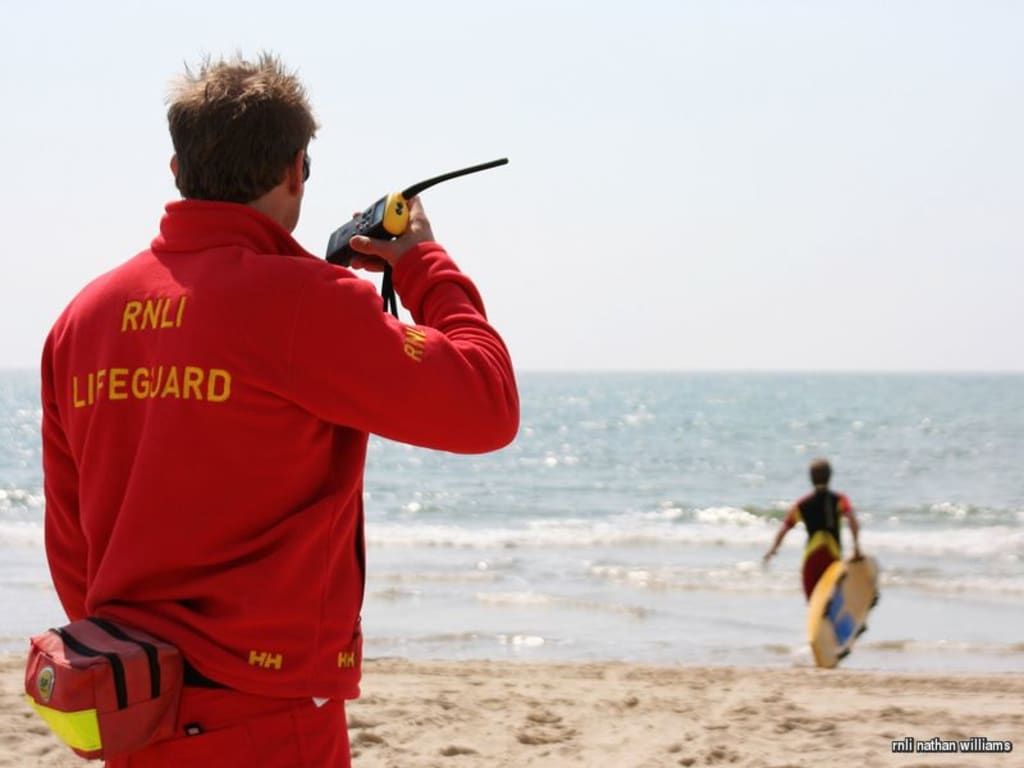
Summer time is here again and it won’t be long before the summer holidays begin. Whether traveling abroad or having a stay cation, if you’re going to be going in the sea it’s important to remember that just because it looks calm it doesn’t necessarily mean that it is.
I grew up in Cornwall and I have a great deal of respect for the sea, especially when it comes to the dangers of rip currents. I’ve been caught in a weak one and that was scary enough and I’ve heard stories about people getting caught in stronger ones. Unfortunately they can be deadly and potentially, they’re not the easiest things to spot.
Five tell-tale signs to look out for are;
- Darker patches in the water beside shallower sandbars
- Rippled or churned water without breaking waves
- Formation of foam
- Bits of debris floating out to sea
- Brown discoloured water where the sand beneath has been disturbed
If in doubt, use a life-guarded beach and ask the life guards on duty if you’re unsure. I can’t speak for anywhere else in the country, but the life guards on Cornish beaches are generally very friendly and happy to answer your questions. Life-guarded beaches, in England at least, also have flags which denote where it is safe to swim. Between the yellow and red flags is the safest place to swim and if there are black and white checked flags that is where surfers and kayakists should be. On beaches without black and white flags, surfers and kayakists can go anywhere except from between the red and yellow flags.
Below are five steps to escape a rip current if you do happen to get stuck in one
1. Avoid Them Where Possible
Always swim on a life-guarded beach between the flags.
2. Alert Others
If you are struggling raise your hand and shout for help, if you do get out of the current on your own, there’s a chance you’ll be very tired, and having other people around to help would make it easier on you. Also, if you are out on a bodyboard or some other type of floatation device, keep hold of it.
3. Don’t Exhaust Yourself
Rip currents are powerful, if you try and swim directly against one you will just exhaust yourself quickly. Before doing anything take a moment to float calmly so you can assess the situation.
4. Check the Water Depth
If you are within your depth, you can stand with your head above the water, stand up and wade out. Rips can flow at up to 5mph, even an Olympic swimmer couldn’t swim their way out of that.
5. Swim Parallel
If the water is too deep for you to stand, swim across the current, parallel with the shore, until you are free. Breaking waves will help you get back to the beach. If you need to catch your breath, float on your back for a minute. Some rip currents run in a circular motion rather than straight out to sea so they may bring you back closer to the shore without much effort on your part.
The RNLI are currently running a campaign called Respect the Water and it is well worth looking at if you’re going to be going anywhere near the sea while you’re on holiday, or even just in day to day life. The main point of it is to teach you what to do if something does happen to you, or a loved one, while around the sea. You never know, something you read there could one day save your life.

About the Creator
Hannah P
I'm 23 and from Cornwall, England.






Comments
There are no comments for this story
Be the first to respond and start the conversation.